Pet a Bakharwal Dog once and forget all the work that you have. They are going to want you to pet them until there’s no tomorrow! Get a Bakharwal puppy dog, and just be ready for a lot of “aww” and “yee-haws”.
Are you adventurous and looking for a companion? Guess what, a Bakharwal dog will prove themselves worth it!
They can be your Michael Phelps when it comes to swimming, Tenzing Norgay when it comes to trekking, and Ronaldinho when it comes to football!
They are an allrounder and will never fail to amaze you!
Of course, all’s well that ends well! All good things come with a little extra work, patience, and good/bad experiences.
This charming Bakharwal dog breed is just as friendly as a Labrador Retriever if you can train them well. We will be telling you all about the breed and how to take care of it when you adopt them!
Once you start reading, you will understand the flamboyance of this breed and why they are the center of attraction anywhere they go
Now, before you all start to get impatient and barking to know more about them, let us all roll over and get to know about the breed, Bakharwal dog!
Note: The motive of DogIsWorld is to promote the revival and adoption of the endangered Indian dog breeds by writing this article. The in-fur-mation on Bakharwal dog is very limited and we have tried our best to provide the most accurate details.
Did you know?
Bakharwal dog breed is vegetarian and they avoid eating meats and flesh!
Let us capture your heart by telling you more about this pooch!
Table of Contents
Bakharwal Dog Images
Quick Facts

Height: 24-30 inches
Weight: 35kgs-50kgs
Dog Group: Guard Dog
KCI Ranking: N/A
At A Glance
Bakharwal dogs are a medium to large-sized breed. Their average weight withers between 35kgs to 50kgs. A male Bakharwal dog breed has a weight that swings between 40kgs to 50kgs and a female Bakharwal dog breed has a weight that swings between 35kgs to 45kgs.
Bakharwal dog height is between 26 inches to 30 inches for a male and 24 inches to 28 inches for a female Bakharwal dog.
A Bakharwal dog lifespan ranges from 10 to 12 years.
A Bakharwal Dog loves running from one place to another. If you can give them enough place to run, you can keep them in an apartment. A balcony, backyard, garden attached to your household would be the perfect spot.
Or, if you stay in an apartment with an easy accessible terrace, that can also be your ideal solution.
Although they are a bit introverted, Bakharwal dogs are a wonderful family breed! They are known to be very friendly and affectionate towards their family members, especially kids. They can go beyond their extent to protect their family members but they can be wary of strangers and might gel up well with them.
They are friendly with almost all the members but they always have their own favorites and attachment. Proper training and techniques will help them to understand commands better and that will make them more disciplined.
Bred in the Himalayan region of Jammu and Kashmir, they were meant to hunt down small and large games. They have hunting genes in them so if there is a cat around the locality, you could see some “cat-astrophy”.
They are pretty friendly with other dogs in general but a dog similar to their breed, say a Kumaon Mastiff or a Gaddi kutta, will become their pack-mates!
Early socialization is a must if you want to maintain a good relationship with all the animals within your house and around the locality.
Bakharwal dogs are a very quiet breed in general. They do not bark unnecessarily until their exercise needs are not met. The other reason for barking could be that they need your attention or they are meeting a family member after a long time.
The weather tolerance of a Bakharwal dog is pretty decent. The Kashmiri sheepdog has been brought up in the cold weather so they have a very high tolerance for chilly weather. Although, when the temperature goes below 1°C, they might feel cold and it is better if you warm them up.
They are extremely adaptable to heat as well due to the high temperature and humidity in the Himalayan region. They are well rounded to suit all climates, but when the heat goes beyond 40°C, make sure they can be cooled down and hydrated with plenty of water.
There could be a problem with tolerance if there is an extreme change in weather conditions. So, keep comfort ready in such scenarios.
Bakharwal dog or Bakharwal mastiff is a little stubborn due to their high intelligence. You will need to have patience in order to train this dog breed. They understand and memorize a command within 25-30 repetitions and they are highly likely to obey a command in the 1st go itself.
If you are an experienced dog owner, you will have no problem handling the dog breed. If you are a newbie, you might take a little longer in training the dog breed according to your desire.
Positive reinforcement works like a charm. Giving a treat in exchange for obeying a command can be an example of training them.
Bakharwal dog has a very high energy level and they need to release it often. The more they pent out the energy, the more they enjoy doing other subtle things. Trekking, swimming, running, and playing are a few of the most enjoyable aspects of this breed.
They are independent in nature so even if you are not home and you leave the breed in an open area, they can engage themselves. Although they would love it if you could take them for a run or a trek once a while at least.
The grooming needs of a Bakharwal dog or bakerwal is very high. They require regular 5-minute brushing sessions to avoid shedding. The brushing makes them feel like they are being massaged and they love that. Not only for their enjoyment, but it also good for the regulation of blood flow in their body.
They need a weekly shower to remove all the dust and dirt their coat has accumulated.
Having the double-layered dense coat, it is possible for them to carry allergens around. It is not possible for any dog breed to be 100% hypoallergenic. So, with regular brushing and showering, Bakharwal dogs or Gujjar Bakarwal will be more hypoallergenic and carry fewer allergens with them.
The Bakharwal dog has become a rare breed in India and is on the verge of extinction. The pure breed Bakharwal is still available for adoption and it is for FREE.
If you go to a dog breeder there is a possibility of fraud and you might be cheated for a similar-looking mixed breed.
The 2020 price of a Bakharwal dog is 60,000 INR to 100,000 INR.
About The Bakharwal Dog
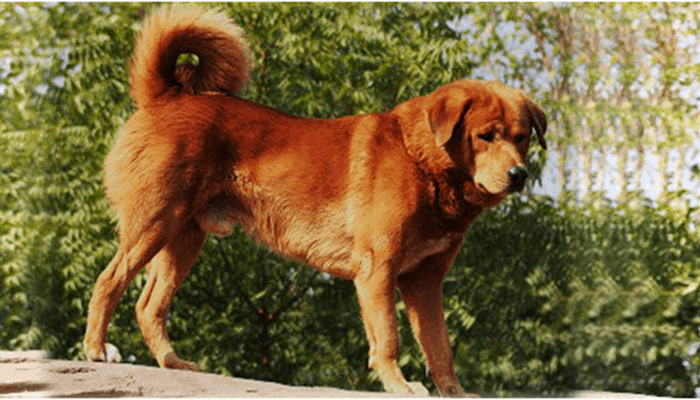
Bakharwal dog is a very polite, brave, and independent dog breed that is endangered right now. Bred by the Bakharwal and Gujjar tribe in the Himalayan region of Jammu and Kashmir, the breed takes on various names.
If you are walking your Bakharwal dog breed one day and someone ends up calling it a Kashmiri sheepdog or Gujjar dog, do not get flustered as it has many names that it goes by. Few of the names are –
Kashmiri dog, Gujjar Bakharwal, Kashmiri Mastiff, Bakharwal Mastiff, and so on.
Bakarwal dogs are one of the most beautiful and handsome dog breeds in the canine kingdom. Athletically built with red piercing eyes is going to steal the show anywhere it goes, making them the Virat Kohli of the canine world.
The height of a Bakharwal dog breed does not go beyond 30 inches. They are considered as a medium to a large-sized dog breed with a weight of maximum of 50kgs. The male Bakharwal dog weight withers from 40kgs to 50kgs and a female Bakharwal dog weight withers from 35kgs to 45kgs. The male Bakharwal dog height varies between 26 inches to 30 inches andthe female Bakharwal dog height varies from 24 inches to 28 inches.
Just like me, this dog loves to munch on food whenever it gets time and this tends to overfeeding and thus, obesity. Looks like I am just writing one of my life stories here. That beautiful eyes might stare at you all the time with a cute little whimper once in a while for you to feed it but do not feed them a lot!
Due to their high energy level, they would want to play or nip on something or the other to pass their time. So, a chew toy would be a perfect way to control their chewing urges and tendencies.
We do so much for our pooch to stop eating, whereas my mom here uses a stick and her death glare to make me stop eating! Wow!
This little munchkin does very well when left alone. Unlike many other dog breeds, a bakerwal does not get anxious or depressed when they are left alone. All you have to do is just give them enough space to run around and pass their time when you are away.
Bakarwal dogs are very people friendly but this does not stop them from doing their job as a Guard dog. If they see a stranger, they might not let them get friendly until they see you with the person for a while. They are very wary of strangers and if at all they sense anything fishy, they will alert the entire family to be safe.
Did you know?
One of the major reasons for the extinction of the Bakharwal dog is because they were shot by the Separatist Militants near the Jammu and Kashmir border.
History

There are many complicated stories that revolve around the origin of a Bakharwal dog. One of the most relevant facts that we have found is that they were cross-bred by a Tibetan Mastiff with an Indian Pariah dog breed by the Bakharwal and Gujjar tribes.
People have rumored that it derives from the old Molossus breed such as Hyrcanian Mastiff or Tuvan Sheepdog and Indian Pariah dog. Although this breed is almost unknown to the countries outside India, other than its neighboring countries such as Sri Lanka, Bangladesh, Pakistan, and Afghanistan.
The British used this breed in order to pull large carts across the Himalayan region. Due to the sheer strength of Bakharwal dogs, they were also used to serve the military forces of the British to alert them from intruders in their campsite.
After the entire Kashmir dispute, the Bakharwal dogs have been targeted by several militants to shoot them so that they would not alert anyone around. The remaining few have been detached from humans and have been living in the forests alone and few others are found in rescue centers and animal shelters.
Due to the smaller litter size of about 1 to 2 a year, this breed is very difficult to breed, or rather it has a very slow inbreeding. This has made them reduce their population massively and now they are on the verge of extinction.
Thanks to the locals of the Himachal region, now this breed is finally reviving and a few have also joined the Police forces and bomb squad instead of German Shepherds. Finally, some aatma-nirbhar for the local Indian dogs too, eh?
Facts Theatre
Parenting Guide And Care
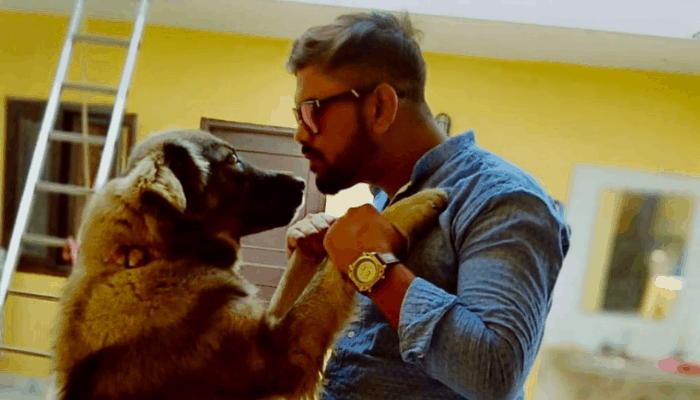
A) How you doin’?
Bakharwal dogs are very active and friendly. Make sure you introduce them to people, different sights, sounds, and houses since they are puppies. Bakharwal dog puppy must be introduced to different animals at a very young age if you want them to be friendly when they are old.
If not, they will just start growing aggressive day by day. This might result in barking/attacking at almost everyone and everything in their vicinity. They are a very inquisitive dog breed and they are curious about everyone and everything.
Say hello to Dora the Explorer!
B) Aye Aye, Captain!
Bred to be the Guard dogs and watch-dogs of the Himalayan region, they need a lot of mental and physical stimulation. Challenging treks, swimming, will help them sharpen their skills. Playing games like hide and seek is one of the proven ways to improve the smell and sharpen the instincts of a Bakharwal dog.
A Bakharwal dog is very independent in general but they need their dog-ma or dog-pa once in a while to motivate them.
C) A Jog a day, Keeps the Dog-tor away
Exercises are very crucial for a Bakharwal dog. They need a lot of play and intense training at their young age. One of the best ways to bond with your dog is when you play with them. You can get to know each other and this develops a better attachment for the pooch towards you.
D) #Captaincool
Bakharwal dog breed needs masters who are patient with them and do not become aggressive towards them. You have to become the next MS Dhoni when you enter the dog stadium for obedience training with your pet. Do not make your pet fear of the leash and rather teach them how to get excited when they see one!
Paw-sitive reinforcement training is the best-known training for Bakharwal dog for obedience training. You can reach miles with this!
E) Joey doesn’t share food!
This breed just loves to eat. If at all they smell anything cooking at home, along with their wet nose you can see their wet mouth and puppy dog face at your counter. Do not feed them more than what is required, as they tend to get obese easily. Make a diet chart and feed them according to that only.
Use very small treats during their training and avoid giving the scraps at all cost, otherwise!
Did you know?
Bakharwal dog has two strains in is the breed; The simple Bakharwal dog and The Ladakhi Bakharwal dog.
Bakharwal dog Personality And Temperament
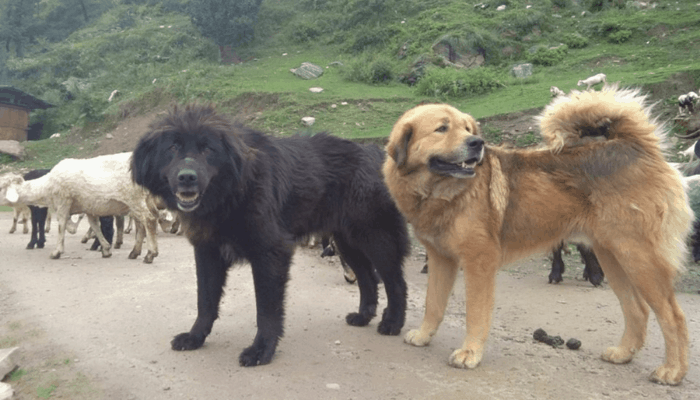
The independent dog breed, Bakharwal dog is very boisterous and amicable with their family members. They are pretty wary of strangers and might end up barking or even attack if not trained well.
A Bakharwal dog loves to play and spend time with smaller kids and pets but does not let them too close as they might end up injuring them with their huge body, unintentionally.
You can always find your pooch in search of something or the other and they would love it if you give them some job. The time you open your door, you can find your Bakharwal dog with its neck up, wagging its tail, and leash on with full playing mode.
If you are a working dog-ma or dog-pa, this is the paw-fect breed one can think of. They are independent and they would love their space. Although, they would need you once in a while to pamper them and give them attention. They are not prone to anxiety or depression but they would get restless if they are left to boredom and might become destructive.
Bakharwal dog is a breed that is eager to please its master. They have a stubborn nature and attitude as they are independent which might be a problem in their training. So, you have to be patient with them to get your final output perfect. I am sure we do not want this to become the comedy of errors.
Suggested: Common dog behavior problems
Did you have a tough day and you want things to be handed out to you? This pooch will make sure they get you your plate, your newspaper, your spectacles on one single command. They have a reputation that they listen to the command given by their master 50% of the time on the first go itself.
One major concern you have to keep in mind is the fact of repetitiveness. This dog breed will start to disobey you if you keep giving the same order one-million a day. Try to come up with different tasks and chores they have to do in a day and make them do that. Repeating a command, say “sit”, is not going to work out if you keep saying that unnecessarily all the time.
A Bakharwal dog puppy might just wander off on its own, thinking it is going for an “adventure”. So, make sure you are always aware when they move here and there, at least till they are trained well.
Did you know?
Bakharwal dog is one of the best Indian dog breeds for fur-st time owners! They make an amazing family dog, especially with children
Colours and Grooming
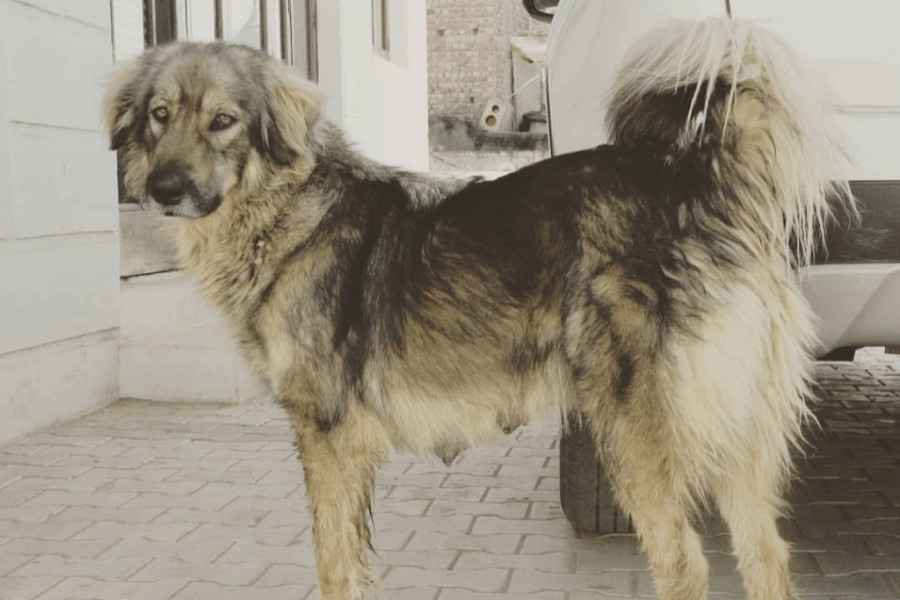
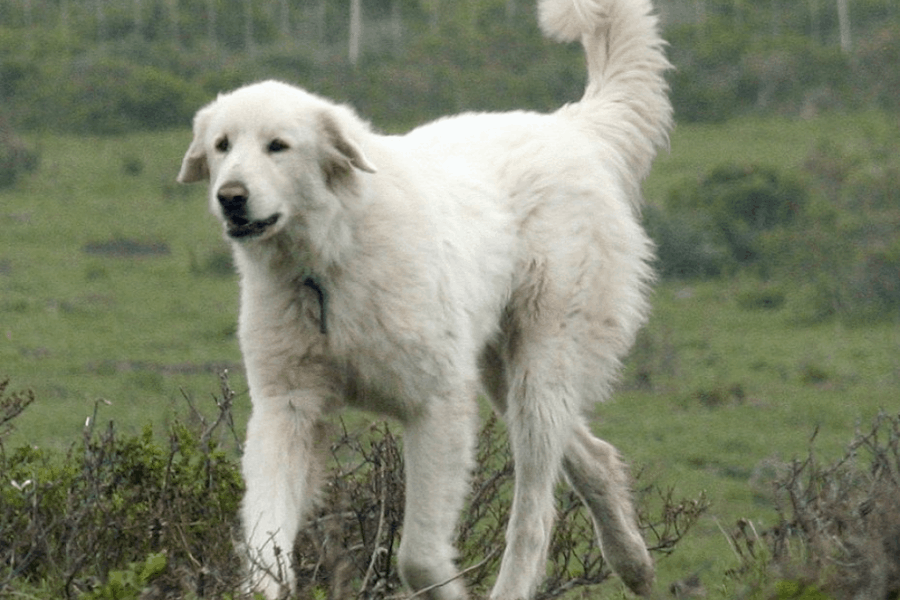
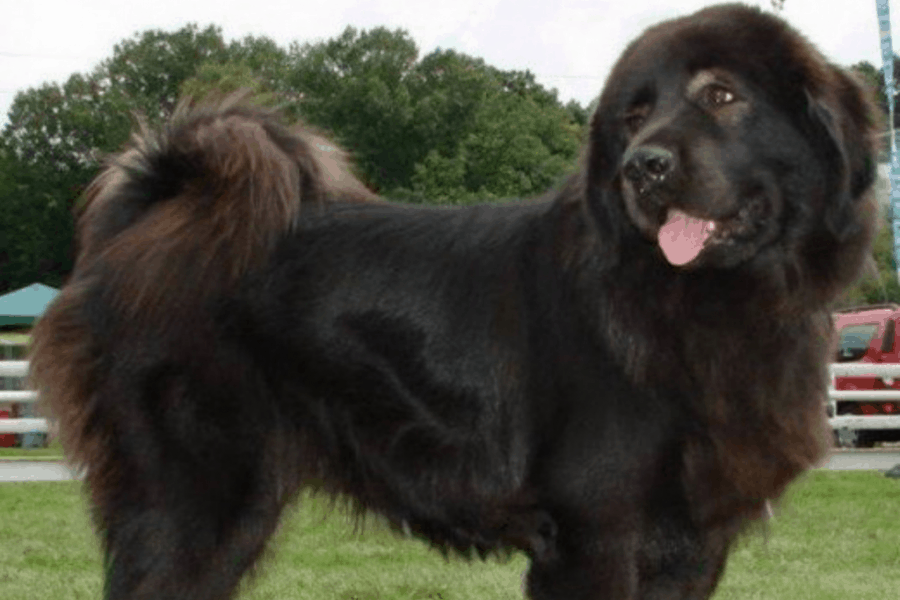
Bakharwal dogs are unlike other indie breeds. They require a lot of grooming (which can be done at home itself (so you need not worry about the other expenses).
1) Who’s A good boi?
It is not going to be easy to make a Bakharwal dog take showers often. Luckily, they need showers only twice a month with brushing twice a week. Get them used to showers and water from a very young age. Brushing their coat is very good as it regulates the blood flowing in their body and also prevents excessive shedding.
Common! Who doesn’t like some good, nice massage?
2) An Eye For An Eye
Check regularly for any eye discharge or eye-booger for your Bakharwal dog. You can clean them with a cotton swab or a lukewarm, soft cloth. If the eye is unusually red, take them to the vet immediately.
3) Say, eeeee
Just like how we brush our teeth, make sure you brush theirs. There are special toothpastes and brushes that are there available at a pet store for your pooch. This helps them remove all the plaques and dirt that have been stuck inside. Also, it helps in avoiding tooth decay during their old age.
4) E.A.T
Cleaning of Ears and the Anal area is very important. These are the two areas where your pooch is most likely to get infection/s. Also, make sure you are clipping their nails often as they might cause difficulties in gripping. When you hear their nails click on the floor, it’s time to clip them.
Feeding A Bakharwal Dog

An Indian dog breed such as Bakharwal dog is just going to love our staple. Roti/chapati, vegetables, milk, and dairy products are what this breed thrives on. Living on the streets, their immune system has become pretty strong to cope up with all kinds of Vegetarian food.
Bakharwal dog loves eating and might want to empty your entire fridge. Make sure you follow a good diet plan of 50% carbohydrates depending upon the height and weight which includes 4% to 5% fibers, 30% proteins, 10% vitamins, and 10% minerals.
Note: Do not give your pooch Garlic, onion, and chili as they can tend to be poisonous for them. Tomatoes must be avoided as it can cost indigestion.
A) Puppy (8 weeks to 6 months)
A Bakharwal puppy dog requires 3 cups of high-quality dry food thrice a day. The calcium needs of a puppy can be fulfilled by making the pup drink milk. Consider this option after asking your vet.
120gms of rice (3/4th cup) with half a cup of milk or curd along with cur fruits will suffice their quality intake for 1 meal.
You can also feed them roti/chapati but make sure you mash them well or even grind it a little bit to make it a powder-y paste along with milk products. Bakharwal dogs are made to feed on a vegetarian diet, while few say that they do eat meat, the majority of the breed abstain from meaty products.
B) Adult (14 months to 5 years)
Your pooch has reached adulthood and they require a good amount of food to make them healthy and fit. Continue feeding them 3 cups of high-quality dry food, thrice a day.
You can now give them 10-15 chapati/roti in their diet with 1 green vegetable (spinach, broccoli, fenugreek/methi, etc.) along with 1/3rd a cup of milk products. If they demand milk products too much, you can cut down the intake of chapati and increase the portion of milk and its products.
Be careful that you do not feed them any toxic dog food that is lethal for them.
C) Senior (10 years+)
As your pooch starts to get older, they might not be as active as they were before. Make sure you watch their activities while providing 3 cups of high-quality dry food, thrice a day. If they are becoming obese, stop the diet immediately and shift to a senior dog food plan.
You can ask the vet regarding the senior dog food plan and how much to feed them. You can also shift them on a milk product diet these days.
Note: Make sure you do not change any of the plans suddenly. Do it slowly over time so that they do not develop any gastric issues.
Did you know?
The Bakharwal dog breed is vegetarian dog breed because the nomadic tribe subsided them on wheat flatbread (phulkas), milk, and paneer (cottage cheese) products. This has been inherited in their genes and this tradition still goes on!
Health and Vaccination

Living with the nomadic tribe for decades and centuries, a Bakharwal dog is pretty healthy and does not face many issues as such. A regular checkup with your vet will be sufficient and this breed won’t let you shed your pockets.
Although, there have been cases where a Tibetan mastiff, an ancestor of Bakharwal, has faced few issues. So, better be safe than sorry, let us look at the health problems that could arise amongst a Bakharwal dog.
1. Canine Hip Dysplasia
Canine Hip Dysplasia (CHD) is a common condition amongst the medium-large sized dog breed. This can be easily taken care of if it is healed in the initial go itself. If left unnoticed, it could cause torments to the joints of your pooch. In the worst-case scenario, it could even lead to arthritis.
The main cause for a Canine Hip Dysplasia is genetics. Other factors such as sudden weight gain, improper diet plan with lack of nutrition combined with irregular exercises can act as a catalyst.
Symptoms that you must look out for in CHD are:
- Decreased activities
- Joint stiffness and crackling
- Thigh muscles getting inflated than usual
- Bunny hopping gait
The main way to cure a Canine Hip Dysplasia is by changing the lifestyle of your pooch. In the worst-case scenario, it can even lead to surgery. Few measures to be taken are:
- Weight reduction of your pooch to remove the stress on their hips
- Shifting the play/exercise grounds. The softer the land while playing, the better it is for their hips and muscles.
- Anti-inflammatory medicines that are given by your vet to ease their pain
- Physical therapy to relax the muscular area of the hip
2. Gastric Dilatation Volvulus
Gastric Dilatation Volvulus is also called bloating. It’s not the same as ours, trust me! It isn’t as easy as “let us just take an eno and my gases will be released”. It is the mother of all problems for dogs.
Bloating is a condition where a dog’s stomach will be filled with gases, food particles, and liquids due to over-feeding and/or low exercise routines. Also, immediate exercise after eating can result in bloating. In the worst-case scenario, their stomach turns upside down and if this happens, it means TROUBLE!
Here are the symptoms that you can look for in bloating:
- Bakharwal dogs are droolers. Although, in this case, look out for excessive drooling.
- Swollen stomach (this is the major symptom that you should have an eye for)
- Rapid heartbeats during very little play
- Breathlessness
- Affect in the exercise routines (Unable to play)
- Constant restlessness and anxiety within them
The treatment for bloating is very tough. If the severity is low, it can be treated with medications and antibiotics. The other treatments for bloating in severe cases are:
- Surgery. If the stomach has been twisted, to untwist it we have to take our pooch for surgery where they can twist the stomach
- A thin tube is put down the throat of your dog where the gases are released and all the food/liquid will come out through poop.
- One of the other ways to do this in a few cases is, putting a thin needle-like tube down to the stomach where the needle hits a certain spot to release the gastral pressure.
3. Obesity
Obesity for dogs is the same condition that we as humans struggle with. It is a case of excessive body fat which ends up making the pooch overweight. This is a common condition that occurs to most dogs and is sadly rising every year.
The main cause of overweight is overfeeding low exercise regimes or low nutrition in their daily food. This can also be a leading problem for diabetes, heart diseases, and arthritis.
Few symptoms of obesity are:
- Fat accumulation everywhere in a way where you cannot feel their ribs, spine, or waist
- Sagging of muzzle and abdomen
- Chubbier face
- Panting all the time
- Quick tiredness
- Unable to run or walk long
We can easily fix obesity if we can act quickly and fast. We wouldn’t want any other diseases that attach themselves with our furball, do we? The treatments for obesity are:
- Slowly increasing their daily activity
- Incorporating a new diet plan which can help in their weight loss
- Stop giving scraps to your pooch whenever they ask with their puppy dog eyes
- Try jumping exercises along with your normal walking routine
4. Cryptorchidism
It is a rather rare or uncommon disorder amongst dogs wherein one or both the testicles are unable to reach the scrotum and are retained in the abdomen. The usual age of 2 months is when the testicles reach the scrotum.
The exact cause of cryptorchidism is still unknown. It is suspected that it is due to genetics. If a puppy dog is unable to reach the testicles to their scrotum by four months, the vet suspects this case.
There are no exact symptoms for this case, but if the testicles do not descend by the age of four months, a vet might be able to feel the palpitations on the abdomen or via ultrasound. One of the major problems could be testicular cancer.
There is no one exact treatment that is fixed for this case. The possible treatment options are:
- Neutering is one of the most important treatments to avoid cancer for the pooch’s offspring
- Surgery of cutting open the abdomen to neuter the pooch
There are many illegal ways of treating your pooch as well in such cases but all the more there is a risk to it. It is best if we do not get into such practices.
Suggested: Skin Diseases in dogs
Bakharwal dog must be vaccinated with Canine Parvovirus. From 6, 8, 10, 12, and 16 weeks of age, Canine Distemper must be given 5 times respectively. Also, ask your vet for a Deworming Vaccination plan as it is a must!! Check out this detailed vaccination guide to understand everything about vaccination before you get your pooch one!
Frequently Asked Questions
A Bakharwal dog is bred in the Himalayan region by the Bakharwal and Gujjar tribe. It is almost on the verge of extinction currently. You might find few purebred Bakharwal dogs in animal shelters and rescue centers. You can also go to the Himachal region or the Leh/Ladakh region where they are still present in a small number.
Also, there is a high possibility to find them in the Pir Panjal range (Rohtang Pass or Banhial Pass, etc) as that is the area where they were initially bred.
Training a Bakharwal dog is going to be a little hard if you are a newbie dog owner. If you are experienced it is just a piece of cake for you. They are easy to please breed if you show dominance from the beginning itself. Play with them for at least one hour every day and this will help you share a stronger bond. Positive reinforcement is the best way to train this breed. A little bit of patience will help you in the long run.
A few centuries ago, the Gujjar tribe and the Bakharwal tribe bred this dog as a livestock guardian. They are guard dogs and watchdogs originally. Nowadays it is just a lapdog and a cuddle buddy that enjoys pampering.
The nomadic tribe used this breed as a livestock guardian and to feed them, the cheapest thing that was available for them was roti/chapati along with curd, milk, and other milk products. Thus, it is in their genes to eat vegetarian food and abstain from non-vegetarian food. Although, there were few owners who have told us that they do eat meat as well, if they are made to eat since they were little pups.
Similar Breeds
Greetings!
This was all about the Gull Dong dog! The research on this breed was very limited and there is a lot more we have yet to discover about Gull Dong.
If anybody owns a Gull Dong, do let us know in the comments below how your first-hand experience was in handling them. Also, if you do have any queries do let us know and we will provide you with the best solution that we could up with.
Sharing this article on Whatsapp, Instagram, and Facebook will help many people and friends who are stuck in a dilemma.
We update our YouTube channel regarding other breeds regularly. Subscribe to our channel to know about it.
Follow our Instagram channel dogisworldcom for a daily doggo-licious content
Happy Woofing!





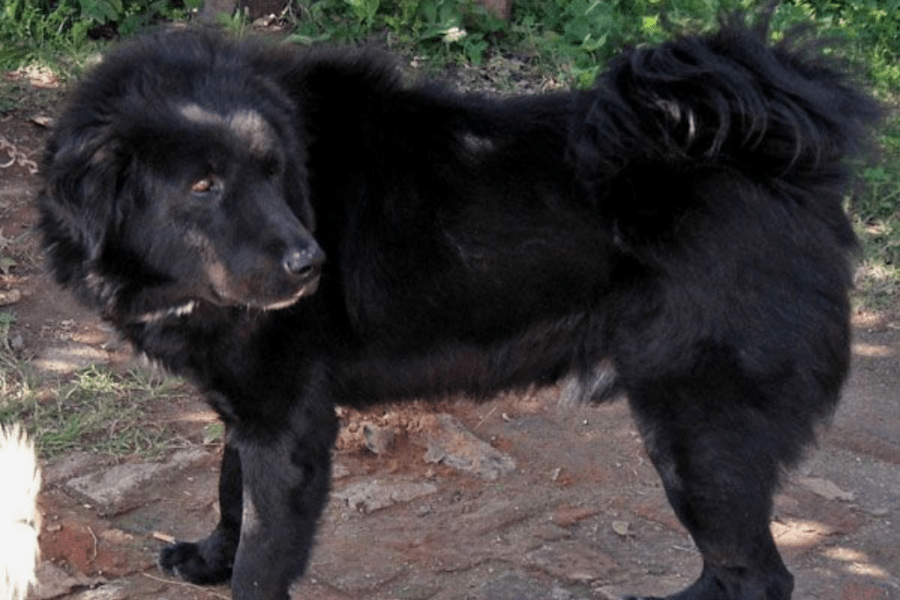
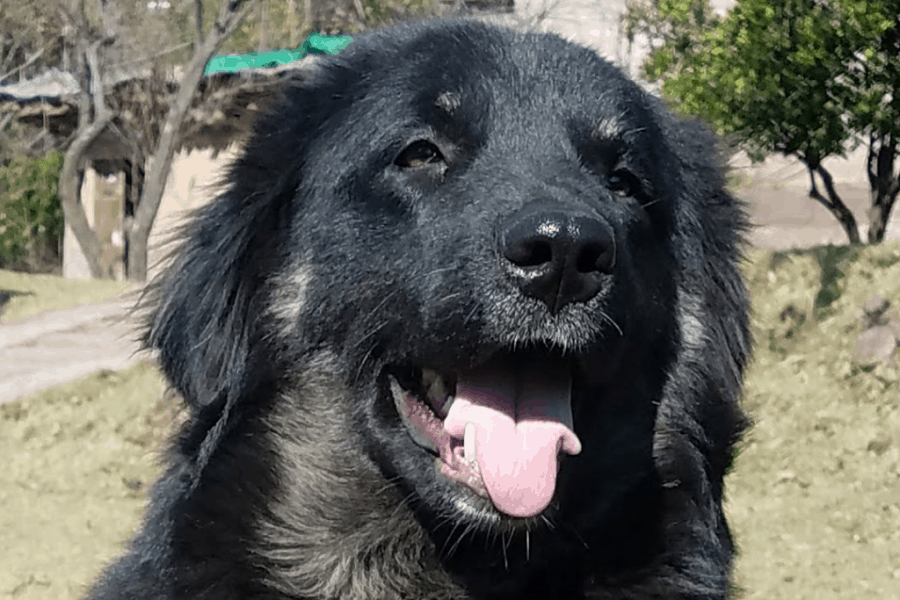
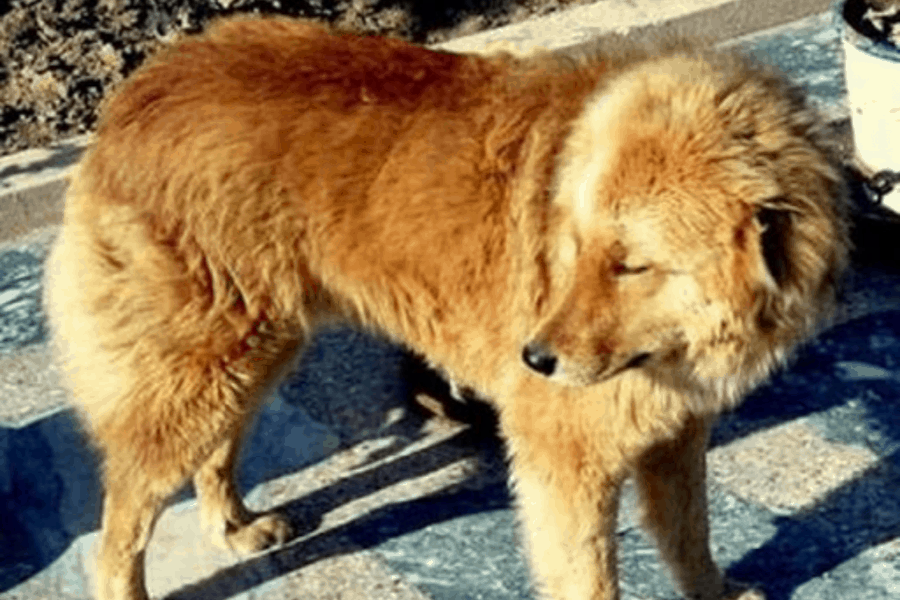
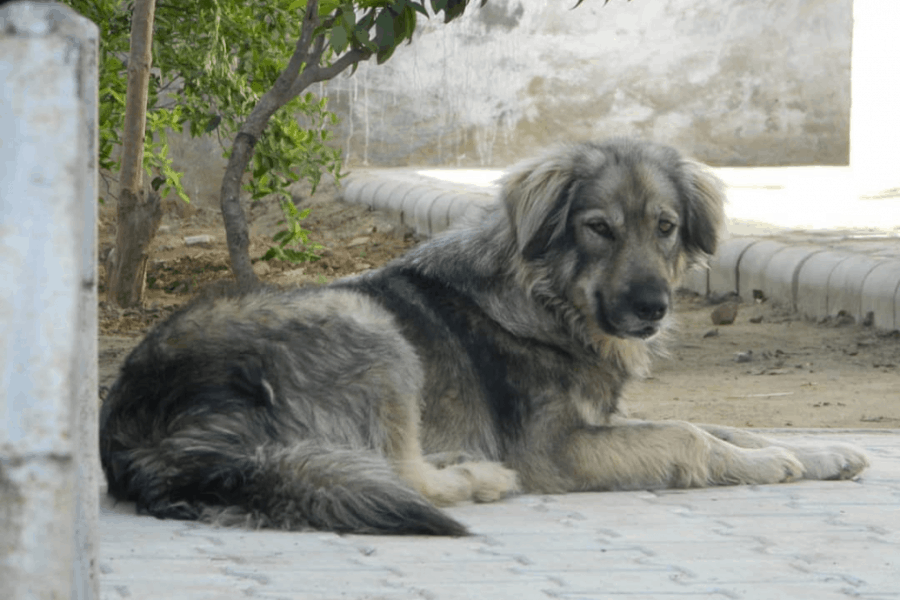
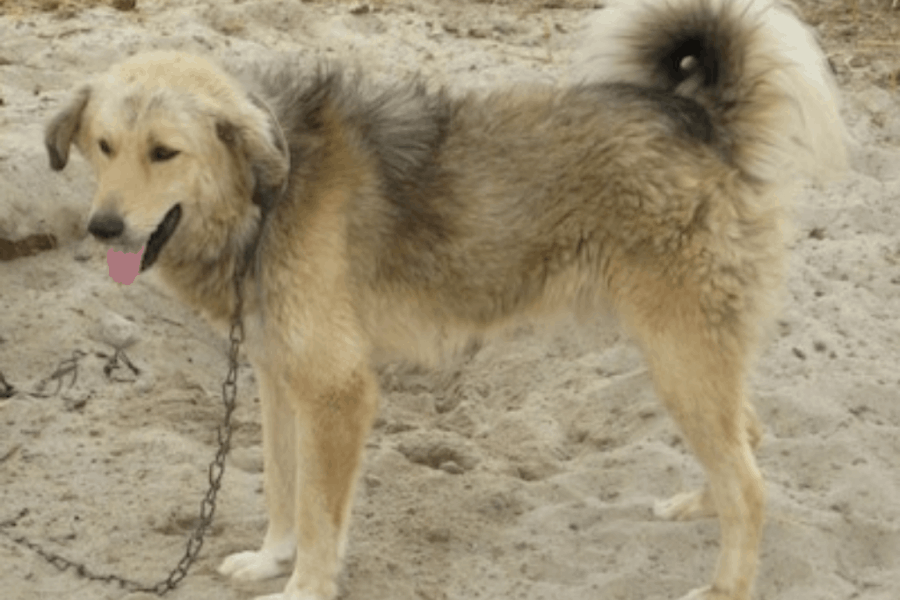












All the details provided is simply useless and not correct at all.